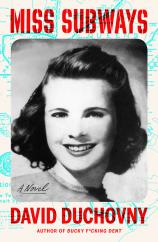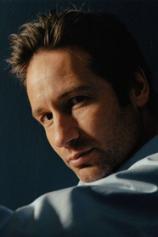Reading Group Guide
Discussion Questions
Miss Subways

1. MISS SUBWAYS opens with an epigraph, a quote from a play by the Irish writer W. B. Yeats. In part, it reads, “for the Sidhe are fishers also and they fish for men with dreams upon the hook.” Who are the Sidhe? What is the function of dreams and dreaming in the story?
2. In Celtic legend, Emer is the noble daughter of a chieftain and Cuchulain is a handsome warrior hero. Are there similarities between Duchovny’s characters and the legend? What other mythological characters populate the book? What is Duchovny’s intention in weaving together mythologies from many cultures?
3. What is the significance of the opening chapter taking place in the subway? Are there features of this underground location that foreshadow later events? What do we learn about the Emer of Part 1 that illuminates the Emer of Parts 2 and 3?
4. Different identities and experiences are given to Emer and Con in each part of the book. How do they change? How are they the same? What is the effect of who they are --- their beliefs, accomplishments, etc. --- on their relationship? In Part 3, Duchovny writes of the future: “Some of it will be true. All of it will be true,” and the book concludes as “An End” rather than “The End.” Have other possible endings been suggested?
5. In the second chapter of Part 1, Con gives a lecture at the 92nd Street Y that deals with the theme of transformation. What other ideas does he present? How do characters and events transform as the story unfolds?
6. What do trains symbolize? What are some of the trains, real and imaginary, in the story? How do the “Trains of Thought” quotes inform the plot?
7. Emer’s father, Jimmy Gunnels, is a man with a fading memory. What is Emer’s relationship with him? Are there parallels to the mythological Emer and her father? What is the role of memory in the development of Emer and Con’s relationship?
8. Crows or ravens appear repeatedly in the myths of Ireland as well as many other cultures. What do they symbolize? Why does Emer bring home the baby crow and mother it? What are the consequences when she reads the Native American tale of the Rainbow Crow to her class?
9. How might the events of the chapters “Go Ask Alice” and “The Dragon King Delivers” be explained? Are we meant to accept them as reality, or is Emer dreaming or having a breakdown or experiencing hallucinations because of her childhood illness? How would you describe this book? As fantasy? Allegory? Satirical commentary on modern life?
10. Duchovny’s chapter titles are full of puns as well as literary, cultural and religious references. The title “Pascal Was a Gamblaholic,” for example, refers to an argument presented by the 17th-century French philosopher Blaise Pascal, which asserts that humans bet with their lives that God either exists or does not. What are some of the other arguments throughout the book regarding religious beliefs and the role they play in our lives? What do Emer and Con believe?
11. What are some of the other references in the chapter titles? What themes or plot developments do they introduce?
12. Does Emer’s friend Izzy give her good advice? What does Izzy think about Con in each part of the story? Where else does Emer seek advice?
13. In the chapter “The World NYPL,” Emer does her best to explain to Con what she believes has been happening between them, but he is slow to understand her. She realizes that “as right as Con was for her, she was not right for him.” How does this realization align with the Part 1 version of their relationship? What is she trying to help Con see about himself? Is there a version of the story where she and Con are right for each other?
14. In Part 3, Emer tells the audience at her reading that she began writing her book “during that horrible election year” --- clearly a reference to 2016. How might she have dealt with issues such as “men being afraid of women” and “real vitriol about immigration” in a work of fiction? What does she mean when she says it is a Fishtory? How is her book, Godsforsaken, like MISS SUBWAYS? Is Godsforsaken Emer’s version of the book that Con, the struggling writer in Part 1, was hoping to write?
15. In the chapter “Home at Last” in Part 3, Emer tells Con that she believes “all our lives are happening at the same time on different planes...” What is the time frame in which each part of MISS SUBWAYS takes place? How would you describe the narrative principle or structure of the story? Does the last chapter help to eliminate any confusion about events that seem to have happened “at the same time on different planes”?
Guide written by Patricia Daneman







